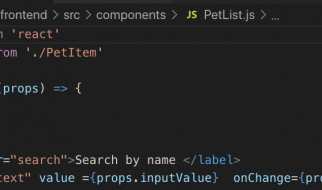And how to get there.
 Photo by Tom Hermans on Unsplash
Photo by Tom Hermans on Unsplash
Of all the questions I?m asked about writing how long should a book be? is right up there at the top. It comes up so often.
Often, it comes up because someone?s already written 120,000 words and they?ve got their fingers crossed that I?ll tell them that?s no big deal.
Or they?re hoping I?ll tell them that 40,000 is plenty long enough for a novel.
In theory, your book should be as long or short as it needs to be in order for you to tell your story.
And if you?re self-publishing, it really is that easy.
But if you plan on trying to be traditionally published, there are guidelines that are important to know and understand. Because agents and publishers use your book?s length as a way to decide whether or not to pursue your project.
Here?s the thing: Agents and Editors get gazillions of submissions every year. They actually take on a tiny percentage of them. Like, less than ten percent. So, they need a way to quickly weed out what they don?t want.
Manuscript word count is one of those ways. They know they won?t be able to sell a debut novel that?s 120,000 words or 40,000 words very easily, so they just pass.
First things first. What kind of novel are you writing? Length varies depending on the age of the audience you?re writing for and your genre.
Adult or Young Adult
A standard adult or young adult novel should be less than 100,000 words. This is a hard stop for traditional publishing. Once you?re established, you can write longer books, but for a debut novel? Stick to the 70,000 to 90,000 word range. Like glue.
If you?re writing science ficiton or fantasy ? books that have a lot of world building ? you can get away with going up to about 110,000 words for adult or young adult novels.
Middle Grade
Middle grade books are written for readers who are between the ages of about 8 to 12. The standard word count for this type of book is between 35,000 and 55,000 words.
If you?re writing on the young end of middle grade, you can go as low as about 25,000 words. If you?re writing science fiction or fantasy with a lot of world building, you can go up to about 75,000 words.
Chapter Book
A chapter book is written for new readers, usually between the ages of 5 and 9. This type of book should be between 4,000 and 13,000 words. Books aimed at younger readers should be at the low end of that scale, books for older chapter book readers should be at the higher end.
Picture Book
A picture book should be between 0 and 1300 words. Yes, you can have a picture book that?s just pictures. If you?re a writer though, you?ll probably have words!
Two Kinds of Writers
There are two kinds of writers out there. Some of us write short first drafts and in revision, we have to bulk things up. Some of us write long first drafts and in revision, we have to lean things down.
So, if your adult or YA book?s first draft is 40,000 words, you have some work to do ? just like someone who?s first draft is 150,000 words.
I can practically hear you telling me that your book has to be 150,000 words ? there?s nothing you can cut without ruining your story. Or that you?ve told your whole story in 40,000 words and adding anything is unthinkable.
Here?s the thing. If you indie publish, you can publish whatever you want. Including your 150,000 word monster of a book or your very slim volume.
But, I promise you, that you can make it shorter or longer without losing anything. And if you can, you should ? especially if you plan to traditionally publish.
But, especially with trimming up a too-long manuscript, you should do it regardless of how you plan to publish.
Here are some tips for bulking up and leaning down.
How to Bulk Up
As you?re reading through your first draft, mark places where you?ve got a lot of exposition. That means telling. If you?re telling your reader about something, ask yourself if that would be better off written in scene.
Ask yourself if there?s a subplot you can add in, probably in the second Act. Look for a story line that has to do with a secondary character, perhaps. Something that can be entirely contained in Act II will make that part of your book, which has a tendency to be slow, more exciting.
When books are too short, often it?s because the end is rushed. Maybe the writer is afraid they?re getting too wordy or they just want to be done. Make sure that you haven?t skimmed the surface in your Act Three (or One or Two for that matter.)
How to Lean Down
If you?re book is over 100,000 words, you have some cutting to do.
As you work through your first draft, ask yourself if there are scenes or storylines that don?t move the main story forward. If they can be entirely lifted from the book without affecting the main story, then you should consider doing that.
Is there a natural ending to your story that?s somewhere between half and three-quarters through? It?s possible that your book is really two books.
My favorite writing tool is called RUE, or Resist the Urge to Explain. I learned it from the amazing book Self-Editing for Fiction Writers by Renni Browne and Dave King. It completely changed the way I write.
As you work on revision, use RUE by looking for places where you?re repeating information because you?re afraid your reader won?t remember. Trust your reader to follow your story and Resist the Urge to Explain.
Also look for places where you?ve repeated yourself with a description or metaphor. Usually one descriptor or metaphor makes for stronger writing.
Here?s my secret weapon for sticking with whatever your thing is.
Shaunta Grimes is a writer and teacher. She is an out-of-place Nevadan living in Northwestern PA with her husband, three superstar kids, two dementia patients, a good friend, Alfred the cat, and a yellow rescue dog named Maybelline Scout. She?s on Twitter @shauntagrimes and is the author of Viral Nation and Rebel Nation and the upcoming novel The Astonishing Maybe. She is the original Ninja Writer.


